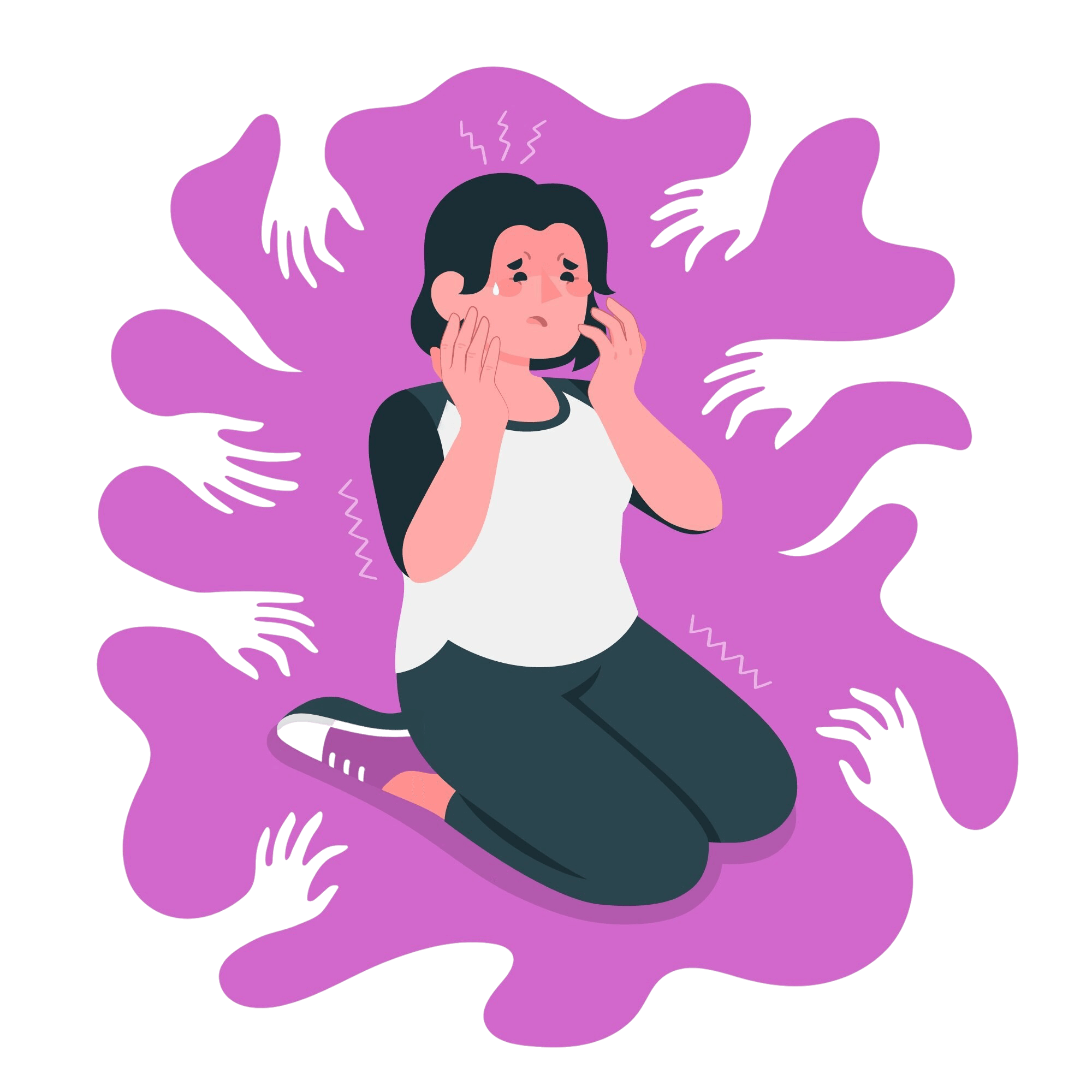If you’ve used collective punishment—like taking away recess from an entire class, cancelling an activity because one student was dysregulated, or using peer pressure to enforce compliance—you’re not alone. These practices are still common in Canadian classrooms.
But they cause real and lasting harm, especially to neurodivergent students and children with trauma histories. Collective punishment erodes trust, reinforces shame, and damages relationships between students and educators. It can also trigger distress and alienation in children who already feel unsafe or misunderstood.What evidence is there that collective punishment is harmful?

Moral Injury
You might feel a knot in your stomach. A mix of unease, defensiveness, maybe even shame. You may feel the sting of moral injury: the deep discomfort that comes when your actions don’t align with your values.
That tension matters. It’s not something to ignore or explain away. It’s evidence that you care. That you entered this work to build children up—not tear them down.
Naming that dissonance is not failure. It’s the beginning of repair.
The acknowledgement
The good news is that repair is possible.
You’re not a bad teacher. You’re not alone. But what happens next matters.
Repair is how we teach accountability—not just to children, but to ourselves. When we model emotional intelligence, we help children learn how to navigate harm without shame.
Every time an adult owns their mistake, a child learns that dignity and accountability can live in the same breath.
A Parent

Breathe and reflect
When we model humility and repair, we don’t just restore trust—we teach children that care includes accountability, that self-respect begins with reflection, and that real strength is knowing when we’ve caused harm and choosing to make it right.
A Parent
First, breathe
✔ Notice your instinct to defend yourself
✔ Get curious instead of self-critical
✔ Say to yourself: “This child’s dignity matters more than my comfort”
✔ Decide you will repair—even if no one asks you to
Before you attempt to apologise or repair, pause. If you’re still focused on your own guilt, your fear of judgment, or your need to feel better, it’s not the right time. Repair requires perspective-taking. It demands that you set aside your feelings long enough to imagine how the experience felt to the child—especially if they are disabled, dysregulated, or already carrying the weight of exclusion. Until you’re ready to centre their perspective instead of your own discomfort, wait. Begin by reading A perspective-taking primer for educators, and give yourself the time to process before you speak. Accountability without empathy risks doing harm twice.
The repair framework
What repair can look like
1. Acknowledge clearly, without qualifiers
“I realise what I said wasn’t fair. I treated the whole class as if they were responsible for one person’s actions. That was wrong.”
2. Name the impact, not just the intent
“I know that made some of you feel ashamed, singled out, or scared to speak up. That’s not okay.”
3. Offer a concrete change
“Here’s what I’m going to do differently next time…”
(e.g. “I’ll talk to individuals one-on-one. I’ll ask more questions before responding.”)
4. Make space for dialogue or silence
Not everyone is ready to speak. But offer the option.
“If you want to tell me how that felt, I’ll listen. You don’t have to.”
5. Follow through and document the learning
This can be private. But reflection matters.
“I’m writing down what I learned. I’m sharing it with a colleague I trust to stay accountable.”
What repair is—and what it isn’t
- It’s not grovelling.
- It’s not asking a child to absolve you.
- It’s a commitment to stop making the same harm.
- It’s teaching by example.
- It’s how community survives rupture.
A note: It’s important to understand that a genuine apology is not a request. It is not a strategy to regain trust. It is not a shortcut to absolution. If you’ve used collective punishment and want to make amends, your apology must be offered without expecting praise, forgiveness, or closure in return.
The person harmed—especially a child—does not owe you their reassurance, their comfort, or their emotional labour. They are not responsible for your guilt. Your role is to take responsibility, name the impact, and commit to change. That is the work.
If your apology hinges on being seen as “one of the good ones,” it isn’t repair. It’s reputation management.
True accountability means offering the gift of repair freely—and letting the person harmed decide what they need.
For more resources, visit endcollectivepunishmentinschools.site.
Reflections
Have you led a circle to acknowledge impact? Facilitated one-on-one restorative conversations? Co-designed classroom agreements with students? Share the strategies that helped you rebuild trust and honour dignity. Your insights can illuminate paths we have yet to chart.
Sources
- The dark side of rewards and punishments in the classroom, part ii: Chartered college research highlights how punitive strategies undermine intrinsic motivation by thwarting autonomy, relatedness, and competence, in line with self-determination theory my.chartered.college.
- Measuring the efficacy of collective sanctions experimentally: This research reveals that collective sanctions, rather than deterring misconduct, amplify in-group cohesion and trigger a “black sheep” effect, deepening social divides rather than solving behavioural issues pmc.ncbi.nlm
- The restorative practice framework in school communities: The international institute for restorative practices establishes a phased model—acknowledge harm, name impact, offer repair, invite dialogue, and commit to change—that provides a rigorous structure for educators seeking to restore relationships iirp.edu.
- Building a positive school climate through restorative practices: A brief from the learning policy institute synthesises evidence showing that restorative approaches reduce exclusionary discipline, improve student-staff relationships, and foster collective responsibility. learningpolicyinstitute.org.
- 6 restorative justice practices to implement in your classroom: This university of san diego guide presents six actionable strategies—ranging from informal affective questions to formal restorative circles—that minimise punitive measures while promoting accountability and empathy pce.sandiego.edu.
- School suspensions do more harm than good: The NEA’s investigation finds that exclusionary suspensions correlate with poorer attendance, lower academic outcomes, and increased behavioural issues, bolstering the case for restorative alternatives nea.org.
- What is restorative justice in schools? We are teachers offers a succinct overview of restorative justice principles—empathy, respect, accountability—and illustrates how repair-centred practices transform school discipline weareteachers.com.
- Inclusive approach to restorative practice for students with diverse needs: This eu forum restorative justice brief introduces the re-pair framework—right approach, establish needs, prepare participation, invite engagement, reflect, and review—that ensures restorative practices honour neurodiversity and accessibility euforumrj.org.
We welcome your ideas
If you have ideas about how to repair harm, we’d love to hear from you.







